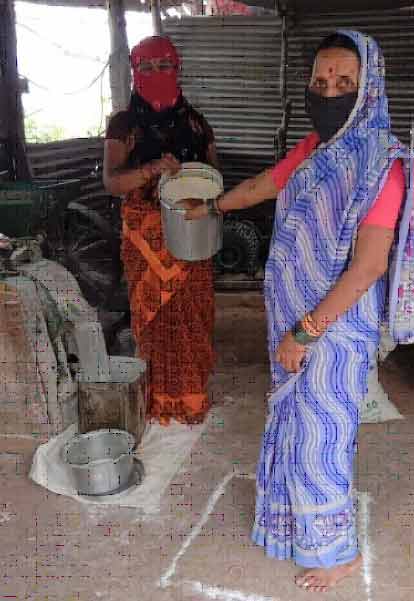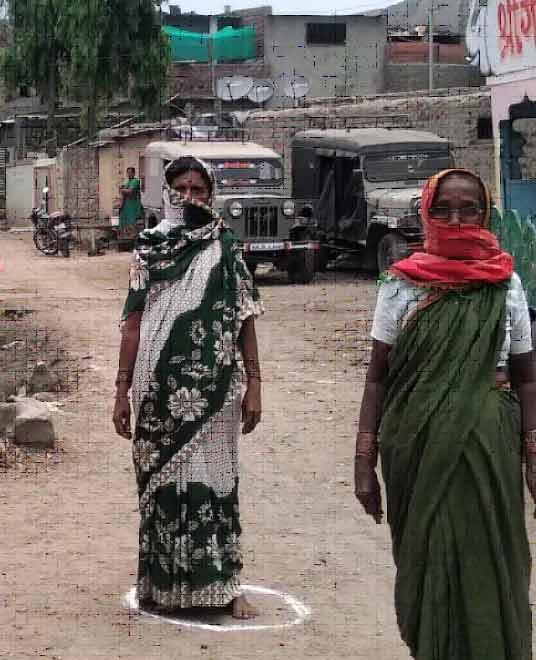Stephen Alexander
Yesterday, Scottish National Party (SNP) leader Nicola Sturgeon advanced plans for ending the coronavirus lockdown in Scotland.
While noting that a “return to normal” is not possible, the First Minister said it is necessary to “transition” to a “new normal” which will see people “living alongside this virus but in a form that keeps it under control.”
“It may be that certain businesses in certain sectors can reopen, but only if they can change how they work to keep employees and customers two metres distant from each other.”
 Nicola Sturgeon (Vimeo.com, theSWP)
Nicola Sturgeon (Vimeo.com, theSWP)
Sturgeon continued: “Similarly, with schools, classrooms may have to be redesigned to allow social distancing, so maybe not all children can go back to or be at school at the same time.”
Sturgeon made these comments days after it was revealed that the COVID-19 death toll in Scotland reached 1,616 as of April 19, according to weekly figures published by the National Records of Scotland (NRS). This figure is almost 80 percent higher than official data reported on the Scottish government’s web site. The government’s official figures stood at 903 on the same date—recording only laboratory-confirmed cases in hospitals. NRS figures include all deaths where a confirmed or suspected COVID-19 infection has been listed on the death certificate.
Although 56 percent of all COVID-19 deaths occur in hospitals, 33 percent, 537 deaths, have occurred in care homes. About 10 percent, 168 deaths, have occurred at home or in non-institutional settings. Care home deaths have been excluded from official figures for weeks.
Data has belatedly emerged from other European pandemic hotspots showing that such fatalities account for as much as 40 to 60 percent of all COVID-19 deaths. This trend is confirmed by NRS figures, which show that the proportion of deaths occurring in Scottish care homes has risen significantly from the 24.6 percent recorded in last week’s figure.
Several Scottish residential care homes have reported double-digit COVID-19 deaths, including the Berelands Care Home in Prestwick, Crosslet House Nursing Home and the Castle View Care Home in Dumbarton, Burlington Court Care Home in Cranhill, Elderslie Nursing Home in Paisley and Guthrie House in Edinburgh. Multiple deaths have occurred in at least a dozen other care homes, and 44 percent of Scotland’s care homes have now registered suspected COVID-19 infections.
One carer recently died of a COVID-19 infection at the Pitkerro Care Centre in Dundee. At least one other care worker and two nurses have died in Scotland, part of a ghastly death toll of at least 118 health and social care workers across the UK. At a single health board, National Health Service Ayrshire & Arran, 216 staff have tested positive for the virus.
Nurses, doctors, carers and other essential workers are being pressured to work in perilous conditions without adequate personal protective equipment (PPE) and infection control protocols, risking their own lives and the lives of their families. Moreover, it remains impossible to track the true extent of the contagion due to the lack of a systematic regime of testing and contact tracing across the UK.
At every stage of this crisis, the devolved SNP government, for all its professed “progressive” political agenda, has aped the reactionary “herd immunity” policy of Boris Johnson’s Conservative government at Westminster. Sturgeon has consistently resisted mass testing and supported the Tories’ genocidal policy of financially incentivising largely privatised, for-profit care facilities to accept the rapid discharge of elderly patients from hospitals, without first testing them for COVID-19.
The impact of this deadly policy has fallen overwhelmingly on the poor, densely populated areas in deindustrialised centres of the working class. Glasgow is particularly exposed due to its high population of elderly and disabled people, combined with some of the worst poverty, mortality and health indices in the developed world.
The Greater Glasgow and Clyde health board has recorded 513 COVID-19 fatalities, followed by Lothian (including Edinburgh) with 256 deaths, Lanarkshire with 228 deaths, Ayrshire and Arran with 120 deaths and Tayside (including Dundee) with 106 deaths. This amounts to a death rate (per 10,000 of population) of 4.4 in Glasgow and Clyde, 3.5 in Lanarkshire, 3.2 in Ayrshire and Arran, 2.9 in Lothian and 2.5 in Tayside. Deaths have been recorded in all health board areas.
Across Scotland there have been more than 800 “excess deaths” in the past three weeks that cannot be accounted for directly by COVID-19 infections. Postponement of cancer screening and a 72 percent drop off in urgent cancer referrals by doctors has led to concerns that people are dying because they cannot access life-saving health care through fear of being infected or because of overstretched health services. In the week ending April 19, there were 38 excess cancer deaths, 11 cardiac deaths, 83 deaths related to dementia and Alzheimer’s disease, and 101 “other” excess deaths, according to NRS.
A deadly crisis is looming for sufferers of drug addiction. Thousands face the life-threatening prospect of unsupervised drug withdrawal as the pandemic is expected to interrupt supply chains in the black market. Scotland has the highest per capita drug deaths in the world, yet addicts have not been put on the list of high-risk priorities for critical care. There are already indications of a spike in deaths of despair, including suicides and alcohol-related deaths as a result of the pandemic.
The situation is poised to deteriorate, with Scotland’s chief economist, Dr. Gary Gillespie, warning of a 20 to 30 percent collapse in economic output in the space of one month. As unemployment and financial instability soars, applications for Universal Credit benefits have increased from the usual 20,000 per month to more than 110,000. Demand on food banks has risen by as much as 100 percent in some areas.
The catastrophic dangers from a global pandemic of a novel influenza virus have long been the subject of scientific warnings. Yet capitalist governments internationally, including Holyrood, have decimated vital social services and scientific resources required to fight the pandemic. At the same time, they have made available hundreds of billions in public revenues to prop up the obscene fortunes of the financial and corporate elite.
In 2015, the Scottish government, together with health and social care authorities, undertook an exercise—Silver Swan—which revealed significant gaps in the country’s preparedness for a pandemic. In a follow up report, NHS Lanarkshire warned, “An influenza pandemic is considered to be one of the highest public health risks for the UK” and recommended the development of “flexible” contingency plans for personal protective equipment testing, and infection control procedures that would “require testing on a regular basis”.
Months into the global pandemic, the SNP government is nowhere near implementing any of these protections. Yet Sturgeon is already raising the possibility of lifting lockdown restrictions, based partly on instruction from German government advisors. Ignoring the guidance of the Robert Koch Institute, the country’s leading authority on disease control and prevention, Germany is already lifting lockdown restrictions on shops and schools, motivated by the demands of big business for a revival of the economy. COVID-19 deaths continue to rise exponentially in Germany and are now in excess of 5,100.
It will not be long before Scotland and the rest of the UK follows the German path so that big business and the banks can resume raking in profit from the exploitation of the working class, to be paid for with an escalation in deaths from COVID-19 and a likely second wave of the pandemic.





